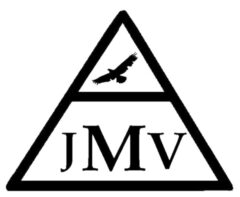Kimberly A. Weil, Vanessa Baumann, Brittany Brown, Rebecca Nadeau, Henry C. Hrdlicka, Brett Gerstenhaber, David Rosenblum, Edward P. Manning
Cite
Weil KA, Baumann V, Brown B, Nadeau R, Hrdlicka HC, Gerstenhaber B, Rosenblum D, Manning EP. Guillain-Barre in the long-term acute care hospital setting: Ventilation does not prolong stay. J Mech Vent 2023; 5(1):13-19
Abstract
Objective
Guillain-Barre Syndrome (GBS) is a rare acute inflammatory demyelinating polyneuropathy, resulting in loss of muscle function and potentially respiratory failure requiring prolonged mechanical ventilation. Data describing the demographics and outcomes of patients with severe GBS requiring prolonged ventilation in the long-term acute care hospital (LTACH) setting is limited. We hypothesized that patients with GBS requiring prolonged mechanical ventilation require longer lengths of stay in an LTACH and are discharged with poorer functional status than GBS patients who do not require mechanical ventilation.
Design, Setting, and Participants
We conducted a retrospective study of GBS patients admitted over a 9-year period at an independent, large LTACH and compared ventilated versus non-ventilated GBS patients’ lengths of stay and functional ability at the time of admission and discharge.
Interventions
Not Applicable
Main Outcome Measures and Results
We found no significant difference in mean (standard error of means) lengths of stay between ventilated and non-ventilated GBS patients admitted to an LTACH (48.4 (± 8.0) 38.8 (± 5.7) days, P 0.37). We also found that ventilated patients with GBS were discharged from an LTACH with similar functional ability than non-ventilated GBS patients (4.5 vs. 4.0, P 0.43 on 10 ft walk; 4.7 vs. 4.5 on P 0.70; 4.7 vs. 4.5, P 0.21 on 150 ft walk).
Conclusion
These findings suggest that GBS patients suffering from prolonged mechanical ventilation may expect similar lengths of stay in an LTACH as non-ventilated GBS patients and a similar or greater rate of functional improvement during their stay. This data support admission of chronically ventilated GBS patients to an LTACH for ongoing care after their acute care without the anticipation of greater length of stay or less rehabilitation outcomes with respect to non-ventilated GBS patients.
Keywords
Guillain-Barre Syndrome, Assisted Ventilation, Pulmonary Rehabilitation, LTACH, Critical Care
References
| 1. Patel A, Lynch F, Shepherd SA. Newer immunotherapies for the treatment of acute neuromuscular disease in the critical care unit. Curr Treat Options Neurol 2020; 22(3):7. https://doi.org/10.1007/s11940-020-0616-8 PMid:32052202 | |||
| 2. Ng L, Khan F. Use of the international classification of functioning, disability and health to describe patient-reported disability: a comparison of motor neurone disease, Guillain-Barré syndrome and multiple sclerosis in an Australian cohort. Disabil Rehabil 2012; 34(4):295-303. https://doi.org/10.3109/09638288.2011.606345 PMid:21988084 | |||
| 3. Gupta A, Taly AB, Srivastava A, et al. Guillain-Barre Syndrome – rehabilitation outcome, residual deficits and requirement of lower limb orthosis for locomotion at 1 year follow-up. Disabil Rehabil 2010; 32(23):1897-1902. https://doi.org/10.3109/09638281003734474 PMid:20331413 | |||
| 4. Kuwabara S. Guillain-Barré syndrome: epidemiology, pathophysiology and management. Drugs 2004; 64(6):597-610. https://doi.org/10.2165/00003495-200464060-00003 PMid:15018590 | |||
| 5. Cheng BC, Chang WN, Chang CS, et al. Predictive factors and long-term outcome of respiratory failure after Guillain-Barré syndrome. Am J Med Sci 2004; 327(6):336-340. https://doi.org/10.1097/00000441-200406000-00007 PMid:15201647 | |||
| 6. Rougé A, Lemarié J, Gibot S, et al. Long-term impact after fulminant Guillain-Barré syndrome, case report and literature review. Int Med Case Rep J 2016; 9:357-363. https://doi.org/10.2147/IMCRJ.S112050 PMid:27853394 PMCid:PMC5106230 | |||
| 7. Koeppen S, Kraywinkel K, Wessendorf TE, et al. Long-term outcome of Guillain-Barré syndrome. Neurocrit Care 2006; 5(3):235-242. https://doi.org/10.1385/NCC:5:3:235 PMid:17290096 | |||
| 8. Witsch J, Galldiks N, Bender A, et al. Long-term outcome in patients with Guillain-Barré syndrome requiring mechanical ventilation. J Neurol 2013; 260(5):1367-174. https://doi.org/10.1007/s00415-012-6806-x PMid:23299621 | |||
| 9. Wellmon, R. (2007). Chapter 32 – Gait Assessment and Training. In M. H. Cameron & L. 241 G. Monroe (Eds.), Physical Rehabilitation (pp. 844-876). W.B. Saunders. https://doi.org/10.1016/B978-072160361-2.50035-1 | |||
| 10. Meythaler JM, DeVivo MJ, Braswell WC. Rehabilitation outcomes of patients who have developed Guillain-Barré syndrome. Am J Phys Med Rehabil 1997; 76(5):411-419. https://doi.org/10.1097/00002060-199709000-00012 PMid:9354496 | |||
| 11. Ferrucci, L., Koh, C., Bandinelli, S., & Guralnik, J. M. (2007). Disability, Functional 247 Status, and Activities of Daily Living. In J. E. Birren (Ed.), Encyclopedia of Gerontology 248 (Second Edition) (pp. 427-436). Elsevier. https://doi.org/10.1016/B0-12-370870-2/00075-5 PMid:17452738 PMCid:PMC2645629 | |||
| 12. Shangab M, Al Kaylani M. Clinical course and predictors of poor functional outcome in Guillain-Barré Syndrome. A retrospective study. Dubai Med J 2020; 3(3):93-98. https://doi.org/10.1159/000510443 | |||
| 13. Connors C, McNeill S, Hrdlicka HC. Occupational and physical therapy strategies for the rehabilitation of COVID-19-related Guillain-Barré Syndrome in the long-term acute care hospital setting: Case report. JMIR Rehabil Assist Technol 2022; 9(1):e30794. https://doi.org/10.2196/30794 PMid:35023838 PMCid:PMC8834873 | |||
| 14. Alexandrescu R, Siegert RJ, Turner-Stokes L. Functional outcomes and efficiency of rehabilitation in a national cohort of patients with Guillain-Barré syndrome and other inflammatory polyneuropathies. PLoS One 2014; 9(11):e110532. https://doi.org/10.1371/journal.pone.0110532 PMid:25402491 PMCid:PMC4234218 | |||
| 15. Simatos Arsenault N, Vincent PO, et al. Influence of exercise on patients with Guillain-Barré Syndrome: A systematic review. Physiother Can 2016; 68(4):367-376. https://doi.org/10.3138/ptc.2015-58 PMid:27904236 PMCid:PMC5125499 | |||
| 16. Meythaler JM. Rehabilitation of Guillain-Barré syndrome. Arch Phys Med Rehabil 1997; 78(8):872-879. https://doi.org/10.1016/S0003-9993(97)90203-3 PMid:9344309 | |||
| 17. Tran DH, Maheshwari P, Nagaria Z, et al. Ambulatory status is associated with successful discharge home in survivors of critical illness. Respir Care 2020; 65(8):1168-1173. https://doi.org/10.4187/respcare.07437 PMid:32234767 PMCid:PMC7538008 | |||
| 18. Kahn JM, Werner RM, David G, et al. Effectiveness of long-term acute care hospitalization in elderly patients with chronic critical illness. Med Care 2013; 51(1):4-10. https://doi.org/10.1097/MLR.0b013e31826528a7 PMid:22874500 PMCid:PMC3500575 | |||
| 19. Seneff MG, Wagner D, Thompson D, et al. The impact of long-term acute-care facilities on the outcome and cost of care for patients undergoing prolonged mechanical ventilation. Crit Care Med 2000; 28(2):342-350. https://doi.org/10.1097/00003246-200002000-00009 PMid:10708164 |
